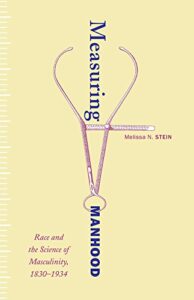Bodies in Blue: Disability in the Civil War North – Sarah Handley-Cousins
 Bodies in Blue: Disability in the Civil War North. By Sarah Handley-Cousins. (Athens: The University of Georgia Press, 2021. pp. 186. Cloth, $35.99. Paper, $29.95.)
Bodies in Blue: Disability in the Civil War North. By Sarah Handley-Cousins. (Athens: The University of Georgia Press, 2021. pp. 186. Cloth, $35.99. Paper, $29.95.)
Amputations may be the most well-known disabilities suffered by Civil War veterans, and because of this, Handley-Cousins chooses to focus on other war-caused disabilities to examine the way disability and manhood interacted during and after the Civil War in the North. Disabilities that soldiers and health officials could not prove occurred unequivocally as a result of the war that obviously continued to impair soldiers ability to support themselves and their dependents after the war often went unsupported. She explains:
Rather, as the impairment most closely associated with the war, amputation did not generally raise the same questions about legitimacy and worthiness as less straightforward ailments. We will instead explore the ways in which soldiers, civilians, and institutions grappled with disorders that did not easily fit into existing cultural narratives of manhood and sacrifice. Centering our attention on such bodies reveals a very different story about Civil War wounds, one where disabled soldiers were just as likely to be used, rejected, separated, and distrusted as they were to be honored. (3)
As stated, the definition of disability was deeply imbricated with the definition of masculinity. According to this definition, a true man was independent and could work and support his family on his own. To qualify for a pension, the disabled needed to prove that they were incapable of working, which then put them in direct conflict with the definition of what it meant to be a man. Soldiers who had suffered obvious wounds, most likely amputation, often had less trouble receiving pensions and were less likely to be perceived as lacking in manhood. For men like Col. Joshua Lawrence Chamberlain, a disability did not necessary mean complete debilitation. By force of will, Chamberlain continued to work following his discharge, but was consistently plagued by a severe and chronic wound that somehow had not managed to kill him. But Handley-Cousins calls it an invisible illness – it was literally hidden by his clothes – so pension granters did not award him the same legitimacy he might have earned had his wound been more visible. Also, Chamberlain’s refusal to let his disability prevent him from carrying out masculine duties worked against him when applying for a pension increase.
The most frustrating of Handley-Cousins’s chapters was the one on mental illness. Handley-Cousins begins the chapter by stating that she will not be using modern diagnoses to diagnose the soldiers interned in mental institutions, which is fair, but she swings to far to the other side in not reporting contemporary diagnoses made by the doctors in the institutions or exploring how doctor’s in the postbellum North defined mental illness. The chapter is frustratingly short. If the federal government was so unwilling to issue pensions to soldiers with invisible disabilities, who was paying to support the mentally ill in these asylums, and who determined when these invisible illness was enough to necessitate admission and continuing treatment? How were veterans treated? What could be her most convincing chapter belies a thorough examination of her subject.
This book is often frustratingly brief. Kudos for briefly comparing the Northern response to disabilities to the Southern one. An entire book could probably be written about that. But not enough here is expounded upon. Black soldiers warrant some mention, but it is not even clear to me if they were eligible for pensions, let alone the struggles they might have faced in attempting to receive them; if this process was different for Blacks and whites. Blacks appear ever so briefly as subjects of medical experiments, but I feel that the number of Blacks experimented on and desecrated in death probably compared significantly to whites and could be explored more here. And how did the war effect the mental illness of Blacks? Did they go to institutions too? Unfortunately, Blacks largely disappear from the narrative after Handley-Cousins finished her chapter on medical experimentation and display. The role of disabilities in the lives of Northern Civil War Blacks deserves much more attention.
A brief read that makes an important argument. I only wish Handley-Cousins had expounded more on her arguments and presented more evidence to support them. This book reads as an introduction to a much vaster and richer topic.









